|
Remembrance Day. I can only imaging that if you survive war, your worldview and insights will be greatly changed. A friend suggested I research how many famous authors participated in wars, either as military or in the thick of things as relief workers. I can only imagine their experience shaped them and their work. Thank you to all who served and fought for our freedom.
For instance, J. R. R. Tolkien, mostly known for The Hobbit and Lord of the Rings, joined the British Army in July 1915 after getting his degree at Oxford. Interestingly, most people at Oxford signed up when Britain declared war on Germany and the University was reduced to just 24 students. Shipping out to France on June 4th, 1916, he participated in the bloody Battle of the Somme and spent almost four months in the trenches. How many battles in Lord of the Rings have Orcs and other beasts swarming over embattled ramparts in protracted, gruesome, and desperate sieges? How well does Tolkien portray man at his lowest ebb, desperate to succumb to their fate, yet finding the spark to hang on against an evil but unknown enemy. The Book of Lost Tales, Part Two contains short stories that were drafted during his time in the war and formed the genesis of The Legendarium, his lifelong work. Middle Earth – the setting for The Hobbit (1937) and The Lord of the Rings (1954/5) – was center stage in The Legendarium as it evolved over the next several decades. Tolkien served in the trenches until October 27th when trench fever hospitalized him and ended his active service. It would appear that the scars and impressions of those months stayed with him throughout his writing career. Below is a short (linked) list of notables from a much longer list if you follow the Wikipedia link at the end.
1 Comment
Unmanned Aerial Vehicles (UAV’s), or drones, have been around since the Austrians sent 200 explosive-packed balloons to attack Venice in 1849. While they are still used for military reasons, drones have become a fun hobby for some and a way of streamlining package delivery for others like Amazon. The FAA registered 1.1 million drones in 1999 in the US alone. Business Insider forecasts this to increase to 2.4 million by 2023, serving the main sectors of agriculture, construction, mining, insurance and media/telecommunications, as well as general private use.
If you have read any of my books, you know I love drones and now I have reason to love them even more. At least two cities in the US have been experimenting with using drones to respond to 911 calls. The City of Houston, Texas, has almost completed their proof of concept and they are about to reveal the success rate to the public. Using two different products from a leading vendor, Paladin Drones, they were able to demonstrate that drones could respond within 90 seconds, sending live video / infrared feeds to attending police, fire, and paramedics. This means that the first responders are getting accurate information on the situation they are rushing towards, including views around the scene, the size of fires or accidents, and hidden dangers that cannot easily be seen from ground level. Chula Vista, the second-largest city in San Diego County, California, has been using drones from DJI since 2018 with significant success. One of their findings is that fast response drones allow central controllers to complete a speedy initial assessment of the incident with the potential to get additional resources rolling while the first set of responders are still en route. With infrared camera’s drones are also able to track fleeing criminals who are on foot through the trees or in the dark and see-through light smoke if there is a fire related call. Meanwhile in Canada, a police drone crashed into a small Cessna aircraft on August 10th, 2021, as the plane landed at Buttonville Airport (Ontario). Despite significant damage to the Cessna, the pilot completed the landing safely. The police confirmed they were operating their drone in controlled (Class E) airspace without notice but have not disclosed why it was there. I want to know – don’t you? Drone technology has enormous potential to help in emergency situations, and I’m certain will become part of our every day lives, despite concerns over privacy and accidents. Regulations are coming into place already, and will no doubt need to be adjusted with experience. What do you think? Do you welcome them for such purposes, or would you prefer they remain fictional tools or toys? Please let me know in the comments below. No, I am not transitioning my gender identity… I’m evolving to someone who is as familiar with gender pronouns as I am with my coffee order options at Starbucks.
If like me, you feel curious, confused, awkward or just enjoy seeing how language evolves and want to know more about the explosion of pronouns, then read on. If you have fatigue about political correctness, perhaps this blog will highlight why calling someone by their preferred pronoun is much more than just good manners; it can be a matter of maintaining mental health, even life or death. Why do some people put two pronouns, e.g. Her/She or He/Him in their auto-signature rather than a single pronoun? Seems redundant. And what about people who use “they”? Are they more than one person? I couldn’t understand it, so I set about discovering who/why and this article is what I’ve found out so far. It’s a work in progress so feel free to chip in through the comments or message me directly. My first discovery was I wasn’t being sharp enough on the base terms like sex and gender, so let’s start with a level-setting glossary. The following is based on a more extensive summary on the NPR.org webpage. They studied GLAAD and referenced resources from the National Center for Transgender Equality, the Trans Journalists Association, NLGJA: The Association of LGBTQ Journalists, Human Rights Campaign, InterAct and the American Psychological Association. Even so, these terms are fluid – this is a new world – and western centric. Sex: male, female, or intersex (below) assigned at birth based on genitalia and chromosomes. Gender: Social and legal status, a set of expectations from society about behaviours, characteristics, and thoughts. Gender Identity: a person’s own perception of their gender. It’s based on what they understand the options for gender to be and how they label themselves. It’s fluid because we’ve allowed ourselves many more options than I had growing up and society is exploring the possibilities that have emerged. Gender expression: is how a person presents their gender outwardly. Cisgender: sometimes just cis, is someone whose gender matches their sex assigned at birth. Non-binary: Binary means one of two states, like on/off but in this context, male OR female. Non-binary is a spectrum of gender identities not exclusively male or female. Someone could feel they are a mix of both, or something outside of male or female. So, someone can be trans (below), or non-binary, or trans-non-binary. Transgender: someone whose gender doesn’t match their birth assignment. Interestingly most studies are showing that about 90% of trans people are still binary e.g., a man identifying as a woman and not non-binary. For clarity a trans man was assigned female at birth and has chosen male, and a trans female is the reverse. Fun fact – Quinn (no other name), formally Rebecca Quinn became the first transgender, non-binary person to win an Olympic medal in 2021 as part of Canada’s woman’s soccer team. Intersex: someone who has reproductive anatomy, chromosomes or hormones that don’t fit the typical male/female format, e.g., they have both female and male, or neither, or something else. Sexual Orientation: is our emotional, romantic, or sexual attraction to someone (regardless of their gender). Pronoun: something like he or they we use in place of a proper noun like their name. Now we have that straight (no pun intended) let’s answer the questions: Why He/him etc.? Apparently, it started as a single pronoun, but people were often misheard. So, the community moved to the full he/him/his to be clearer. This has shortened over time to he/him. Who are “they”? Isn’t that a plural pronoun? Yes and no. It’s not when we don’t know the gender of a person. Then we say, “they went to the shops.” People might choose “they” when they feel that neither designation (male or female) fully captures their gender identity. How prevalent is this? I found it hard to locate clear survey results but Statistics Canada’s study of the 2019 census was in the middle of the pack at 0.24% of Canada’s population reporting as either trans or non-binary. The US a little lower. I saw some themes: it’s becoming more prevalent, there are many more trans men than trans women, and prevalence is 3 times greater in the under 35 years old group than those over 35. I noted that according to the Williams Institute 1.2 million Americans identify as non-binary (11% of the LGBTQ group). So, a small percentage, but that is still a lot of people. Why does it matter? This is the important one for people with political-correctness fatigue. I struggled with this one, but then I’m a straight woman. My reference is either male or female. But as a woman, if someone started calling me ‘he’ I’d get fed up with it quickly. Realising that gave me a little insight, but the penny really dropped when I recalled a previous blog I wrote which reported a reduction of over 42,000 attempted teen suicides corelating with the establishment of same sex marriage being legalized. We can’t underestimate how important to humans that our identity is not just acknowledged, but fully accepted. Using the right pronoun is much more than being polite. If you don’t think so, ask everyone you know to refer to you by the opposite of what you are for a month. A tragic and related example is that most of us in Canada are beginning to accept is the atrocities suffered by our indigenous peoples over the past 300 years at the hands of the majority of the population of Canada. One of the worst aspects was mainstream society, through Government and Church, attempting to eradicate or reprogram the identities of First Nations because they were an inconvenient minority – about 3%. Not much more than the trans and non-binary group, and less than the fuller LGBTQ+ group. Denying the First Nations identity has had tragic impacts over generations, and it seems to be true for LGBTQ+, too. Can there be he/they? Yes. Ultimately the person in question is signalling to you how they feel about their gender is, i.e., their gender expression. If he/they feels right to them, then it is, and to hell with grammar. What is ze/hir/hir? Ze, pronounced zee, is a gender-neutral pronoun. Melissa-Jane ate hir food because ze was hungry. Is it new? No, it’s been around since 1864 apparently, although it only appears in dictionaries since 1972. It’s not long since the prefix Ms. was introduced for women who wished for privacy around their marital status. I could see ze becoming a similar language device. How do we know the preference of someone when we first meet? Navigating this might be difficult for a while. Some environments provide badges such as the one pictured above, but of course this isn’t sustainable, and might also be unwelcome in some scenarios. We are encouraged to start by offering our own preference, “Hi I’m MJ and I use the pronouns she/her.” Perhaps awkward at first, but a good way to get to know people. But as much as some crave the correct acknowledgement, others might not. Or their preference might be circumstantial. In a social setting yes, but in a work setting maybe they’re not ready yet. I worked for an international company that had an office in the Middle East. That country’s morality laws prosecuted non-cis, non-hetero people, even those travelling on business or working there on assignment. You could be hung for being gay. Be careful in this case what you put on your LinkedIn profile. There is a lot to work out as we get used to this new paradigm. Perhaps the place to start is everyone starting conversations with ze, listening, and acting on feedback. I hope the above helped. I’m curious how people are feeling about this topic, so feel free to leave constructive and polite comments below. The summary I studied has much more, including how to get comfortable with these new pronouns in our lives. A Guide to Understanding Gender Identity and Pronouns : NPR I believe it’s long past time for sex education in school to be reimagined, as opposed to a gradual evolution. Like mental health, it’s a topic that warrants attention, so please forgive this being a longer blog than usual. I worry that old fashioned attitudes will stymie proper attention to sex-ed. I know I’m not a doctor, psychologist, or an educator, but I’d like to share the research supporting the development of new sex-ed. I know I wish I’d had this program at school.
Season 3 of Netflix’s Sex Education will be released on September 17th and stars Gillian Anderson. As Agent Scully, Anderson influenced a generation of women to move into STEM professions (science, technology, engineering, and math). Learn more on The Scully Effect here Geena Davis Institute research. Now Gillian and a great cast are at it again in this fresh series aimed at helping teens learn about the complicated world of human sexual relations. The series writers are aligned with leading social psychologists; we need to reimagine sex education for future generations. We should move away from the current abstinence/shame driven agenda which still underpins most schools’ sex-ed script. The average age for first marriages is now around 30 years old – 10 years later than the norm when I was in school – and yet very little has changed. The message sounds more Blockbuster than Netflix with each passing year; this is how we get pregnant, this is how we prevent pregnancy and disease, and bad things happen if we get this wrong. At least schools are now starting to teach consent, but I don’t think “Keep it in your pants,” from puberty to 30 is realistic even if some wish it were. North America has close to the highest teen abortion, teen STI, sexual assault and divorce rates in the developed world. So, how can we be more effective at teaching good decisions around sex and sexual health? Similar to tactics for reducing smoking, drinking, or wearing seatbelts, the solution lies in access to broader, fact-based, education. It should be delivered by people who are comfortable with and knowledgeable of the subjects both socially and academically. I don’t know what everyone else’s experience is, but my teachers were not comfortable with the topic. I don’t think Sexual Health Educator is a job people should giggle about behind the e-bike shed. It should be a job we are proud to see our kids take on, and students should see dedicated professionals as a valued member of faculty. Firstly, schools should teach us how to do our own critical thinking and objective research – not just for sex-ed but for all topics – in a way that is decoupled from any one generation’s social and moral standards. Why? Because our grandparent’s binary moral filters prevent us from absorbing what we need. We feel shame when don’t meet our (their) moral standards or feel guilt if we breach social standards. Shame can motivate us to behave better, but persistent or overwhelming shame correlates clinically to aggression, addiction, depression, suicide, bullying, eating, and sexual disorders. Guilt relates to bad acts we performed whereas shame is about us being a bad person. Both inhibit the understanding of complex and sensitive topics which are fundamental to our health. Secondly, let’s reprioritise what we try to pack into K-18, when sex education can be mandated. I understand the reluctance to talk to kids about sex. They are all too ready to try it so it’s tempting to say don’t teach it until they are old enough to use it. But we know they want to use it much earlier than we think they should, so we teach it way too late. I do not agree that teaching kids about sex will lead them to having sex earlier. No one was trying to make me a child engineer when they taught me Pythagoras. If we have no problem equipping people for later in life when it comes to engineering or math, it’s faulty thinking to leave a void of knowledge about sex in the hope kids won’t do what comes so naturally when their hormones are blazing. I never used calculus once in my successful 40-year career, so I think we can make room for things we will need to use. I know Shakespeare, Geography, History and how to make hydrogen in a test tube are important too, but if we took just three percent of the time allocated to each, there is plenty of time to equip youth for the emotions, communications skills, hormones, and difficult moments they will face from puberty onwards. Consent is the foundation of my reimagined syllabus. The syllabus is morally and politically sensitive, yes, but not academically hard. We can borrow from countries like the Netherlands, who have an extensive syllabus on consent, and much lower sexual victimisation statistics. But we need to get out of our own puritanical way. Justin Lehmiller has a great article with details here. It starts by citing a United Nations report on vital statistics in 50 countries which concludes that the US has the 9th highest teen pregnancy rate, the Netherlands the 4th lowest, and gives insight into why. Their syllabus extends well beyond our limited “No means No!” Respecting the No is the essential point, of course, but it’s like giving car keys to someone who has only been taught the brake. What about braking smoothly, or keeping the car straight in an emergency when you stamp on the brake? Driving and maintaining a car is a complex package and it’s the same with consent. They do a good job of changing the game entirely by attacking our programming that women should be the gatekeepers around sex and men are destined to pursue it. They give practical advice on real life scenarios such as how to react when one person wants to use a condom, and the other doesn’t, or someone wants a lot more or different sex than their partner. They teach communication skills to negotiate a position of agreement instead of a position of embarrassed resentment. We need to rebrand consent to make it sexy. There is nothing hotter than someone enthusiastically saying they want you. Settling for awkward hinting and body-language loops back to shame. Along with consent for all ages, the birds and bees and disease avoidance principles are in my base syllabus but rebranded to be positive and non-judgemental. The base package should also include gender and sexual identity terminology (that genie has left the bottle and it ain’t going back in). There should be tools to evaluate where we each really fit into this spectrum that take the novelty factor and guesswork away. Let’s be honest, up until recently all psychology research was based on studying straight white men, and everyone else has been considered a slightly broken version of ‘him.’ Most treatments try to get you back to that norm. We need new emotional and psychological baselines for women and the growing LGBT+ spectrum so our treatments and guidance align to what they need, not what would help a straight white male. The LGBTQ+ community may only make up less than 1% of Canada, USA, and Australian population, but remember, indigenous and First Nations peoples are only 2 to 3.3%; it’s not about gross numbers. We have to do better at not marginalizing minority groups whose very identity is on the line. Stress impacts both our sexual and general health and receives close to zero attention in K-18. How stress and similar factors affect desire, arousal, and other aspects of our sexual health are addressed in well researched models such as the dual control model. I’ve read Emily Nagoski’s Come As You Are and Burnout and heard her lively podcasts and it’s clear that fact-based, non-judgemental, AND engaging information is readily available. We just have to teach it and keep it fun. Perhaps one of the most contentious elements is how much information and guidance youth should get without the knowledge of their parents. A parent’s job is helping their underaged child to navigate the most difficult issues such as wondering if they are pregnant, transexual, LGBTQ+ etc., and for many the outcome is wonderful. But in other cases, the outcome is damaging and has resulted in child suicide. I believe information and support should be provided without parental knowledge, but I’m less clear what the right approach is when its time to act on that knowledge. What I am sure of is that we need to get this right in our reimagined system. I also think there should be greater attention to the porn industry in sex ed. Topics like porn addiction, ethical porn, and the artificiality of most porn need to be discussed so that young people can make informed decisions on the explicit content they consume. Chances are that by middle school, most children have seen porn, possibly a lot of it, and will take it for face value if they are not educated early. Then there should be a series of primers on a range of topics we will need later in life that would let people know that the information is out there if they ever need it. As an example, in a recent survey of 195 students on the relationship secrets men and women keep from each other, the number one secret women keep from men is being sexually victimized. There is growing evidence of what strategies have been successfully employed by victimized women to re-establish much of what was taken from them. Some of these strategies revolve around specific communication techniques. The school primer could include:
These types of primers myth-bust fallacies that become embedded in our thinking and so make things difficult later. This discourages us from seeking the resources to get the right help at the right time. Erectile disfunction is an example. Men have a 50% chance of experiencing ‘the droops’ in later years, and often have bouts of it earlier. Are they prepared? A phrase like “I bet he can’t keep it up,” highlights how deep in our psyche such fears sink in. We could nip this in the bud. Knowing the seven or eight likely causes of erectile dysfunction and the treatments available is essential for men and their partners. In the same vein the term “sexual debut” is taking over from virginity as we acknowledge the latter reinforces the outdated patriarchy model of society, and (sadly I think) is even being stigmatized in some cultures. A recent study of 500 heterosexuals in the US reported how those who had not yet had their debut felt this stigma, and another study of 5000 people in the US concluded both men and women said they would be unlikely to enter a relationship with virgin. Why are we teaching a model which is ultimately shame based and damaging, especially if there is no proof it reduces unwanted pregnancy and sexually transmitted disease? I think we need to finally accept what has been true forever, even if some try to say it is otherwise: The primary reason humans have sex isn’t for procreation. As Cindy Meston points out in her study 237 Reasons People Have Sex, the drivers of pleasure, keeping your partner focussed and loyal, and sense of duty rank much higher. Studies have repeatedly shown that:
If all of the above seems complicated and embarrassing to you, consider if you would feel like that if we were taught properly when we were young. Although it is a large field of study, we are learning that we can be more balanced, fulfilled, and safe if we invest the time to understand ourselves rather than hide from the very things which make us human. And it’s easier and more useful than calculus. I would love to hear what you think of these concepts and other suggestions for sex education. Please feel free to use the comment section. Dear Readers, my heart goes out to everyone impacted by the pandemic whether that be physically, or fears about the risks, the financial worries and the long list of concerns. I’m filled with pride and hero worship for health workers, grocery store staff and a long list of others on the front line. I’m donating 100% of my book sales revenues for the next three months to health workers relief funds.
The Post: Being a bit of a sci-fi nerd, The Matrix series has a place in my heart for several reasons, so I am excited to see The Matrix 4 in production. I fondly remember Trinity (Carrie-Anne Moss) and Niobe (Jada Pinkett Smith) as some of the first really gritty, female characters in sci-fi who were more significant and real than most of their male counterparts. They were presented as tough equals and not eye-candy (despite the PVC catsuit). This was a feat as ground breaking as the movie's up-to-then unparalleled special effects, and the sort of characters I strive to aspire to make Marcy, Gia and the Kobe sisters in my novels. I remember watching "the making of" DVDs and being fascinated that The Matrix movies were produced by two brothers, Laurence and Andy Wachowski. I had never heard of sibling producers working on a movie before. Their approach to filming in Australia was unique, and I loved how they demanded the team push the boundaries for several new effects. Trinity's kick, where time freezes and the camera circles around. The bullets that leave sound trails and time slows as Neo dodges around, and later raises a fearless hand to freeze bullets in the air. The scary, spidery Sentinels, which moved in a truly mechanical fashion but also like animals too. The Niobe character stayed with me and was the inspiration for The Nude Detective character Naomi (Books 2 and 3); in part for appearance but also for the way she stood as her own person supporting Neo against her husband Lock (Harry Lennix) in the defence of humanity. In researching The Wachowski brothers, I discovered two interesting things I didn't know. Firstly, some other of their works that I hadn't attributed to them, but now that I know, I can see the similarity are Bound, V for Vendetta, Cloud Atlas, Jupiter Rising and Sense8. Sense8 was a bit more of a shock to discover it was from their stable as, unlike the others, it was so openly sexual. Vivid onscreen sex and sex toys, as well as gay, lesbian and queer characters. Secondly, I discovered that over the last 14 years, both Wachowski brothers (first Laurence and then Andy) came out as transgender women. The Wachowski Brothers are now The Wachowski Sisters. Another first in the movie industry? The Matrix wrapped up in 2003, and around 2009 Laurence transitioned to Lana, and around 2016 Andy transitioned to Lily. Sense8 Season Two was the first production that Lana completed without Lily (Lana worked on this with her own wife's production company instead). Lana has gone on to write, produce, and direct The Matrix 4 while Lily is writing and is the executive producer for Showtime's Work in Progress. One thing I take away from the Wachowski's work to date is they don't politely follow the emerging Hollywood formula; they put a lot of themselves into each work and push to break the mold. So I can't wait to see how all of these events might effect The Matrix 4. Obviously, computer effects have advanced, as have what we permit and expect in terms of progressive content. Will The Matrix 4 have LGTBQ characters, and will it be "sexed up?" Will we have to wait until 2021 to find out? I anticipate they will surprise us with the unexpected, as they always seem to do. In many US States it remains illegal to teach about same sex lifestyles and issues in schools. Many conservative parents support this arrangement and won't fill in the gaps for vulnerable, curious and sometimes confused and frightened youth. But what if it could save tens of thousands of children's lives?
A study of nationwide (US) data from January 1999 to December 2015 revealed that the establishment of same-sex marriage is associated with a significant reduction in the rate of attempted suicide among children, with the effect being concentrated among children with a minority sexual orientation, resulting in approximately 134,000 fewer children attempting suicide each year in the United States. That's 134,000 less attempted child suicides, folks… and just surrounding that one issue. What if we dealt with our broadening sexuality openly instead of shutting down the conversation? Could we save many more? I think it is worth considering how we seek common ground around factual, objective education. Individuals can research online, of course. But what if they don't know to do so, or where to turn, or they go onto sites that are not reputable? Netflix has recently released two separate educational series. They are not openly for or against the conservative or progressive viewpoint, although being prepared to broaden the conversation is clearly more progressive than some would like. Despite being often accused of promoting gratuitous sex and violence in their shows by some viewers, could Netflix help fill in some educational gaps? One of the series, "Sex Education", is set in an American College style campus (although everyone seems British), and the male protagonist - a nerdy type - is the son of a sex therapist. When the street smart 'school tart' is desperate for help she discovers his unusual font of secret knowledge and benefits accordingly from some psychological support. Then she realises she can monetise him and the series is a tongue in cheek succession of adventures about the pair helping kids through the very messy world of sexual problems of a modern day college or university. "Sex, Explained" is a new docuseries narrated by Janelle Monáe, an American singer, writer, rapper, actress and producer. She announced she is queer in 2018. In five episodes the series takes a modern walk through Fantasies, Attraction, Birth Control, Fertility and Childbirth. It reflects on non-hetro relationships and the complications we are unravelling today. What is the state of sex education in our schools? On the one hand, in the UK in September 2020, new regulations will come into effect allowing primary school children to learn about different types of families including the LGBT+ ones. But this move does not have unanimous community support. Birmingham City Hall, for example, experienced a deluge of protests claiming that it is not cool to teach about anal sex, pedophilia and trangenderism. In the USA on the other hand, only 29 States require sex education to be taught. Only nine States require discussion of LGBT+ identities, and seven Southern States ban the discussion of LGBT+ issues, or even answering questions about it. Some even require schools to “frame LGBTQ identities and relationships negatively.” I just took a break from writing this blog and my newsfeed coughed out that drag queens in Louisiana have just announced a protest march to highlight that libraries are prohibited from allowing minors from withdrawing books on LGBTQ+ issues. So topical. So by jurisdiction the rules around sex education are as confused and inconsistent as ever, even though the world has recognized and begun to better define new layers of human complexity. We've even created a language allowing us to separate things like birth gender from sexual orientation from sexual preference. And I've just been talking about sexual identity and orientation here, but I think the same questions apply to the types of sex experienced within traditional as well as these newly defined relationships, too. Will the increasingly conservative supreme court move to pass progressive laws to help? And if they do, US States have a history of ignoring federal edicts on such things, anyway. It took 15 years of State by State court battles to remove local administrations blocking the Federal directive on same sex marriage. There are still 11 States with anti-sodomy laws on their books, and even though convictions are rare today in those States, those lingering laws are used to harass people whose preferences are offensive to the more conservative types. I know it is easy for me to suggest more education is the way to go, and I know others think that that it is better to ban all such education. If you think such topics are the devil's work and lead to pain, suffering and the weakening of essential social value, I get why you want the subject suppressed, just as I don't want schools to teach how to build bombs and chemical weapons to our kids. I can make an argument that sexuality and weapons are different, but the problem is I'm arguing against people whose views on sexuality are part of their faith. Faith, by definition, means they believe in something when there is no factual support for it, and in some cases the facts are against it. So any argument is moot. This sad conflict has many years to run, but I'm glad there are more and more mainstream outlets for thoughtful and helpful information to inform choice for those with open eyes and minds. I just wish schools did a better job of teaching critical thinking so people can effectively put these new resources to work and are better equipped to evaluate what they hear whether from the parents, pulpit, peers or the media. I do believe there should be mandatory, objective and balanced fact-based education for all on what makes us human, and what we need to know to understand others and show tolerance. It seems a shame we have to rely more on commercial enterprises like Netflix and Youtube than the leadership of our countries. It is an interesting point to note that late December sees an increase in accidents and suicides. Or so say the statistics. We need to be extra careful, of course, but also a bit more ready than usual to help. Having witnessed several accidents and violent acts I’ve learned how important it is to overcome that initial ‘freeze’ reaction and do something, however small. Fight, Flight or Freeze responses are not always under our control as they manifest before our rational brain has figured out what is happening. If you realize you are in a freeze response mode that is not helpful, do your best to act in some way - call the emergency line, or tell someone, or even step in and help if you feel you are able. If we can each do something useful, big or small, the situation typically gets better for those in trouble. If it were us or our loved ones in trouble, we would want that help from a friend or a stranger.
Have you ever had a fantasy about being in trouble and being rescued by Idris Elba or McDreamy? Or Demi Moore, Kate Winslet? Did you know it could really happen? What if I was in trouble in a theatre in England and Idris was on stage. Would he stop the play and help me if I had a medical emergency? That is exactly what he did for a woman having a seizure on July 3rd, 2019. He stayed with her right up until the ambulance arrived. Almost worth having a seizure for? Almost? Are you a Cumberbitch like me? Benedict jumped out of an Uber in London to defend a man beset by four muggers. The Uber driver followed him into the fray and they saved the victim. Tom Hardy and even Daniel Radcliffe (I say “even” because I still think of him as 14-years old although he is 30 now) have tackled muggers too. Weston Masset crashed his car and asked his rescuer “Are you famous?” “Yes, I’m a doctor,” replied Patrick (McDreamy) Dempsey, jokingly. Vin Diesel, Jamie Foxx and Mark Harmon have also pulled people out of car wreckage and were credited with saving lives, as was Danny Trejo who pulled a baby from an overturned car. Tom Cruise called paramedics at one accident scene and then personally paid the $7,000 fee as the crash victim didn’t have medical insurance. Is it rare for celebrities to step up and help in an emergency? Not at all, and we hear of many visiting areas of famine or natural disaster to render aid personally and to use their notoriety to highlight the issue. Or adopting children from impoverished situations. Demi Moore noticed one of her twitter followers reaching out in some distress and got them in touch with suicide prevention. It would have been easy for her to overlook or ignore strange social media activity. Michael Rapaport was on a flight from Houston to Los Angeles and saw a man with both hands on the lever of the emergency exit door trying to open it. He rushed over and pinned the man to his seat. The man later told police he was trying to get into the toilet. Steve Buscemi was a firefighter in New York before he was a famous actor and in the 9/11 attack he rushed back to his old unit and spent several days helping sift through the gruesome carnage. Kate Winslet was staying at a house that caught fire and stopped to help a 90-year old woman escape. The woman was Richard Branson’s mother. John Malkovich witnessed a man fall onto scaffolding and rip his neck open. Malkovich staunched the blood flow until help arrived. Harrison Ford is a private pilot and donates his time and aircraft to search and rescue. He rescued two lost hikers, one with severe dehydration, in his personal helicopter. Gerard Butler saved a drowning boy by jumping in after him. Clint Eastwood saved a man with the Heimlich maneuver. The above celebrities have helped strangers, sometimes at great risk, which is awesomely courageous, but I am not advocating anyone do anything they think is beyond their own ability and comfort level. Sometimes all we need to do is tell someone else, or call emergency services, or find a way to be helpful after the fact. If we all do something in an emergency, however small, it will help. Sometimes all that takes is to ask yourself “Am I frozen, or could I do something?” I wish you all a safe passage through the end of 2019. And if you can’t be safe, I ask that your favourite celebrity rescues you in the nick of time. In case you missed it, John Legend has assumed the heady mantle of Sexiest Man Alive. He took the title from Idris Elba. Who voted for that? Clearly Idris is better, no? Idris quipped that he wanted to keep the news quiet as Idris stole the title from Dwayne (The Rock) Johnson a few years ago and The Rock had yet to notice.
The article made me laugh, then second check myself - is it still ok to have such contests… beauty pageants? And off I went down that whole rabbit hole train of thought. But I’m not going to go there today – that topic has been well covered. Instead, I investigated why we find people sexy. The sort of questions I was asking about sexiness were: Why is a neck-nuzzle sexier than a nose-nuzzle? Do women have a myriad of erogenous zones and men only one? Yes, I mean the obvious one. And the answer, by the way, is that both genders have about the same number of erogenous zones, with women having a tiny advantage. In a 2013 survey conducted by one South African and two British universities, polling a sampling of 800 people, feet were not deemed sexy at all by respondents. What? Oh, sorry, I’m confusing my shoe shopping fetish; forgive my Sex in the City moment. But by contrast, if you watch the video link at the end of this blog, you will discover that two celebrated (they call themselves mavericks) neuroscientists have proven that feet are in fact one of menfolk's top four unconscious sexual attractors. All very confusing, but try to guess what the other three unconscious attractors for men are - one might surprise you. There are clearly many dynamics involved in sexiness, from pheromones and personality to timing. I decided to focus on neuroscience, and dutifully read the first five articles that popped up on sexiness and neuroscience. All were grappling with the flurry of recent studies which contested whether women and men’s brains are different. It seems that debate rages hotly right now, eclipsing other interesting issues, but the following three statements seem commonly agreed to: our brain is highly influenced by sex and vice versa; we are some mixture of nature and nurture; we are on the trail of the answers, but not close. In truth, until very recently, most of the research in this field was conducted on men almost exclusively. Scientists assumed we could learn everything about the brain we needed to from men and then we could adjust for those pesky hormones that only women have. Only recently have we started to study women specifically and our emergent community of "non-gender-normative" brothers/sisters. One exception to the fixation on sex-brain-gender-difference articles was a clinical study (a.k.a. hard to read) concluded in Belgium in 2018 on mice. The study pulled the covers back on a largely ignored molecule appropriately named kisspeptin/Kiss1R. It seems Kiss1R is key to regulating both which gender we are attracted to and it also regulates what we find sexy about them. But the study ended there, and we must await the next chapter. My personal belief is that the mice found Legend sexier because Legend was frequently on TV in 2018, whereas we haven’t seen a new Luther episode since 2017 and the Recency Effect kicked in. Ogi Ogas and Sia Gaddarm’s book A Billion Wicked Thoughts (2011) was by contrast very insightful. Ogi and Sia are Computational Neuroscientists who essentially devoured our (anonymized) sex related internet searches to draw conclusions and then cross-checked them through focus group and other research. It argues that when you truly believe you are anonymous your real subconscious nature comes through. If these topics interest you, I highly recommend their book. CLICK HERE for a fascinating taster on YouTube which, interestingly, compares Edward Cullen (Twilight hunk) to Shemale Porn (yup) to the Mona Lisa – it is cleaner than it sounds but it does discuss sexual themes with a class of university students in a light-hearted, educational setting. I’ve just started Cacilda Jethá and Christopher Ryan’s book Sex At Dawn (as in the dawn of time), which, in the same way that Yuval Noah Harari’s book Sapiens looked back 60,000 years and challenged what we think of humanity, aims to take the same statistical-anthropological look at sexuality. It’s great so far, but again approaching a decade old. If anyone has recommendations for something from the last two years, I would love it if you could comment below. Anyway, no answer yet to my Idris vs John puzzler, but I promise I will sacrifice myself researching them both. In a bid to regain Idris his title, I have sent all episodes of Luther to universities to play to their mice Having a second career as a writer is a privilege I can enjoy because brave women and men fought for democracy. Their bravery and sacrifice deserve our recognition and remembrance and November 11th is the day we put aside to do so. Aside from my annual Remembrance Day reflection, I also love those moments where you see someone buy a beer or a coffee for a warrior to thank them for stepping forward.
As an admittedly somewhat awkward segue from my Halloween blog post, I want to recognise a little-known group of warriors called The Night Witches. They were one of the most celebrated air-warriors of World War Two. The Soviet 588th Night Bomber Regiment was one of three all-female squadrons. Despite having the oldest planes and uniforms handed down to them from their male counterparts, they became one of the most successful squadrons in the war. The Germans nicknamed them The Night Witches as their decrepit by-planes made a swishing noise which sounded like someone sweeping the sky with a broom. These brave aviators’ small planes could load just a couple of bombs under the wings and so to make a difference they did many sorties each night. It wasn’t uncommon for the old-fashioned bombs to get hung up on the bomb-release mechanism and pilots sometimes climbed out onto the wing at 3000ft to give the bombs a shove. Another group of women who were under appreciated during WW2 were the US and Canadian female pilots who ferried bombers, fighters and ammo from factories to the frontline airbases. The Allies wouldn’t let women fly in combat until decades later than the Soviets, and in the 1940s these brave women’s contribution was scorned by some male pilots. Belatedly, the USA granted the WASPs (Women Airforce Service Pilots) veteran status in 1977 and in 2009 the group were presented with the Congressional Medal of Honour. Better late than never I guess, and now women fight alongside men with equal status. In researching this piece, I came across many pictures of female pilots wearing khimar, burka and niqab’s. Pakistan, Afghanistan and many areas of the world I see as being less progressive also have women pilots in their modern fighter jets. Thank you, all you women, and men of course, for your service be it military, police, medical or fire-fighting. Is being politically correct still politically correct? I think it's great we are unpacking everything and adjusting to avoid harm and prejudice, but I hope we leave some fun in the world. But in this vein, with Halloween two weeks away and the costume choices under scrutiny, my mind wandered to Halloween's history and wondering if witches would be offended if I impersonate them for the night. A flash-back scene in The Nudest Detective - Book 3 in the series - was inspired by real life events. Jeanne Mance, who I borrow from history for my story, opened the first hospital in Montréal, Canada, in 1645. It was called Hôtel-Dieu. Prior to immigrating to New France, as that part of Canada was known then, Jeanne had served as a nurse during the European wars of the early 1600s, the most prolific era of the witch-hunts (1450-1750). Paranormal activity is a sub-theme in the story and such a strong woman (Jeanne) making a huge difference to that part of the world, combined with the witchcraft connection, was intriguing to me. With Halloween on the horizon, I decided to fact check, and see if my memory of the witch-hunt, which I associated with a misogynistic attack on millions of women, was sound. It turns out I was out of date. I thought that "The War Against Old Women" (as it's been called) was mainly a misogynistic, religious persecution and ignorance/fear based and had resulted in the deaths of over nine million women. Although still debated, it seems most modern scholars would put the number nearer (a still horrific) 60-80,000 people, of which about 25% were men. That average doesn't reflect that in Germany most victims were women, while in Iceland 92% were men, as were 60% of the victims in Estonia. The reasons and gender bias varied greatly across regions. These estimates are based on formally recorded trials and executions across Europe and there also would have been many unrecorded kangaroo courts. The nine million number is interesting because it became an oft repeated data point for the (much needed) 19th century feminist movement and is attributed to the German author Gottfried Christian Voigt. It was repeated globally by a famous early feminist Matilda Joslyn Gage and it is still prevalent as an inaccurate, but seemingly credible, data point 140 years later. It was in my head at least. What are modern scholars attributing the persecution of perhaps 20,000 men and 60,000 women to today? I'm sure misogamy was rife back then, an example of which is the claim from Nicholas Rémy, (c. 1595), who had 800 witches executed at his behest when he was a judge: "[It is] not unreasonable that this scum of humanity, [witches], should be drawn chiefly from the feminine sex" … "The Devil uses them so, because he knows that women love carnal pleasures, and he means to bind them to his allegiance by such agreeable provocations." Heinsohn and Steiger (1982) believed witch-hunts targeted people (mostly women) with midwifery skills and knowledge of birth control. Killing those with the knowledge to prevent and terminate pregnancies was a way to accelerate the repopulation of Europe following the Syphilis epidemic and bubonic plague (The Black Death) which between them wiped out half of Europe's population. In England, up until 1772, it was illegal for newspapers to report on parliamentary debate and so much of the legal argument for the 1735 Witchcraft Act is not clear, but the Act reflected the 'enlightened' trend in Europe, making it an offense carrying a penalty of a year in prison to accuse any person of having magical powers and of witchcraft. The last person jailed (not convicted) under the act was Helen Duncan as late as 1944. Some believe she was targeted by superstitious military intelligence officers due to their fears that, having contacted the spirits of the recently sunk HMS Barham, she might reveal the details of the upcoming D-Day landings. She was arrested faking a séance (and creating ectoplasm using cheesecloth). She was charged with two counts under the Witchcraft Act (and two counts of obtaining money under false pretenses and three counts of public mischief) and served nine months in jail. The act was replaced in 1951 by the Fraudulent Mediums Act. Sitting through yet another two-year-run-up to the US elections, perhaps bringing back a law disallowing reporting on politics might not be a bad thing. So should I dress as a witch for Halloween? I was brought up as a Christian (lapsed now) and had always quietly wondered if celebrating a pagan event would lead me to hell. It seems I was wrong here too. Halloween's origins date back over 2,000 years to when the Celts of Ireland and Northern France celebrated Samhain, on November 1st. Samhain marks the end of summer, and heralds the cold seasons which were associated with death and disease. On the evening of October 31st, it was said that the barriers to the spirit-world thin, and ghosts and demons come back and attack the land, thus causing the seasons to turn. By the 9th century, Christianity had spread to the Celts and Pope Boniface IV renamed the November 1st celebration All Saints day. A "hallow", the archaic name for a Saint, provided the basis of the term Hallow'een, i.e. the eve of All Saints day. Today most pagan-based faiths still promote November 1st while those who recognize Halloween on October 31st are more likely Christian. I think I will dress as a witch for Halloween in a show of solidarity – I don’t think they will be offended. Did you know there is a movement in North America to move Halloween from October 31st to the last Saturday in October. I think they are focussing on the candy grab aspect and parents don’t want it to fall on a school night anymore. Are you for or against moving it to the last Saturday in October? |
About the AuthorFind out more about MJ Parker and her books by clicking above Archives
November 2021
Categories |
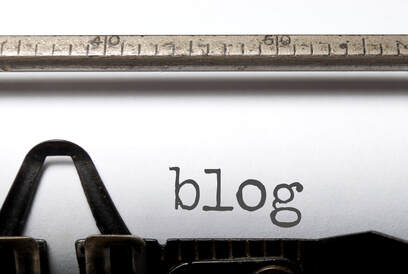
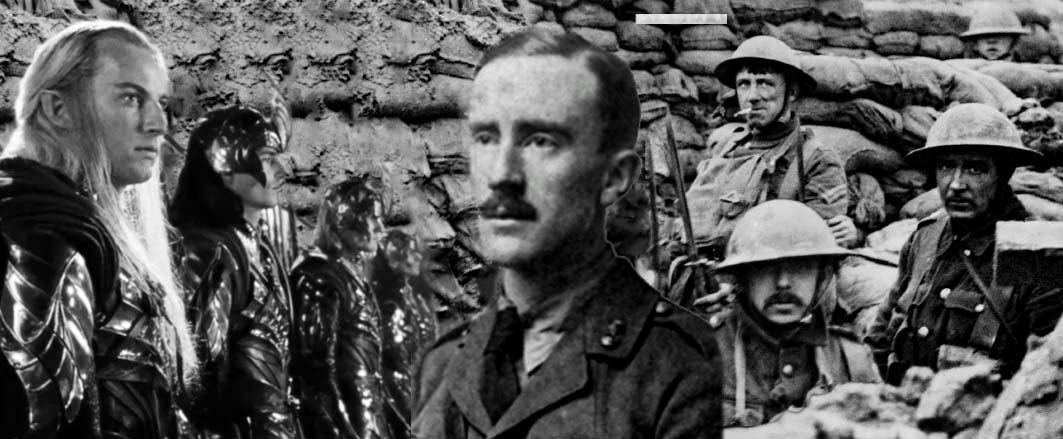
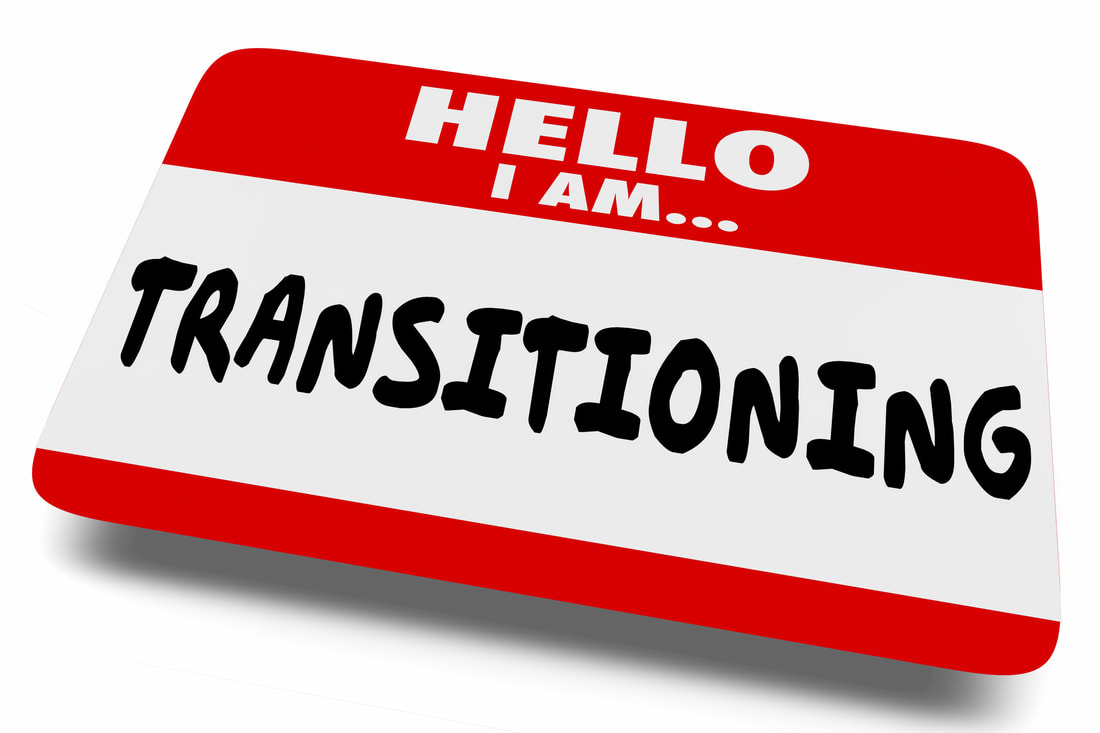
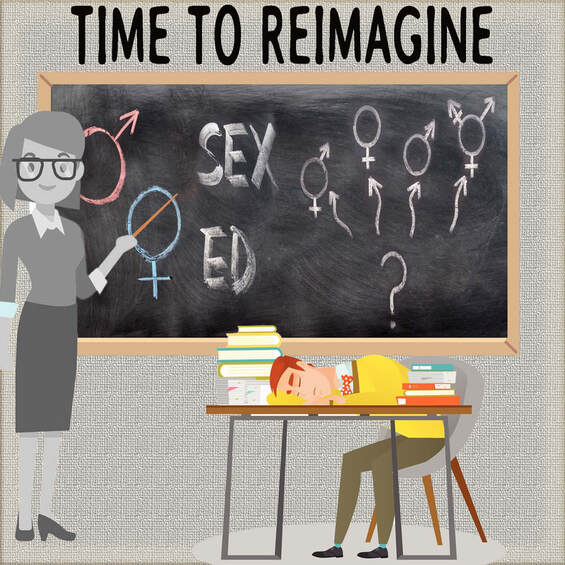
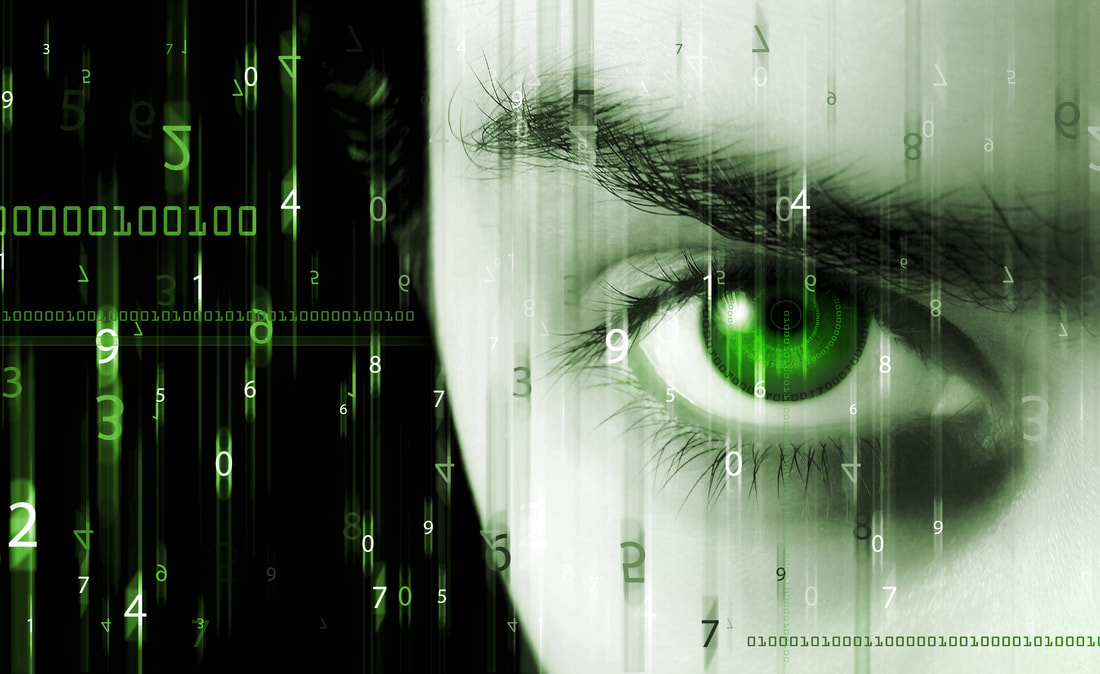
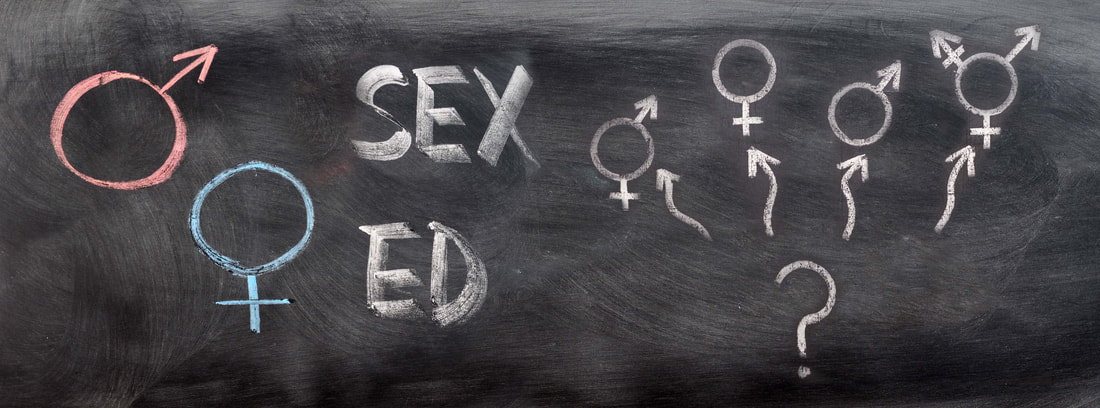
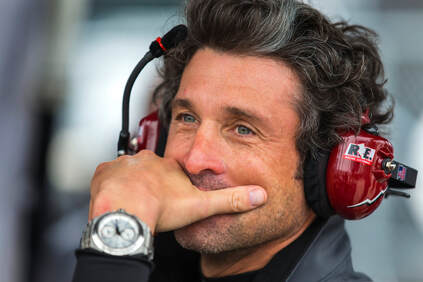
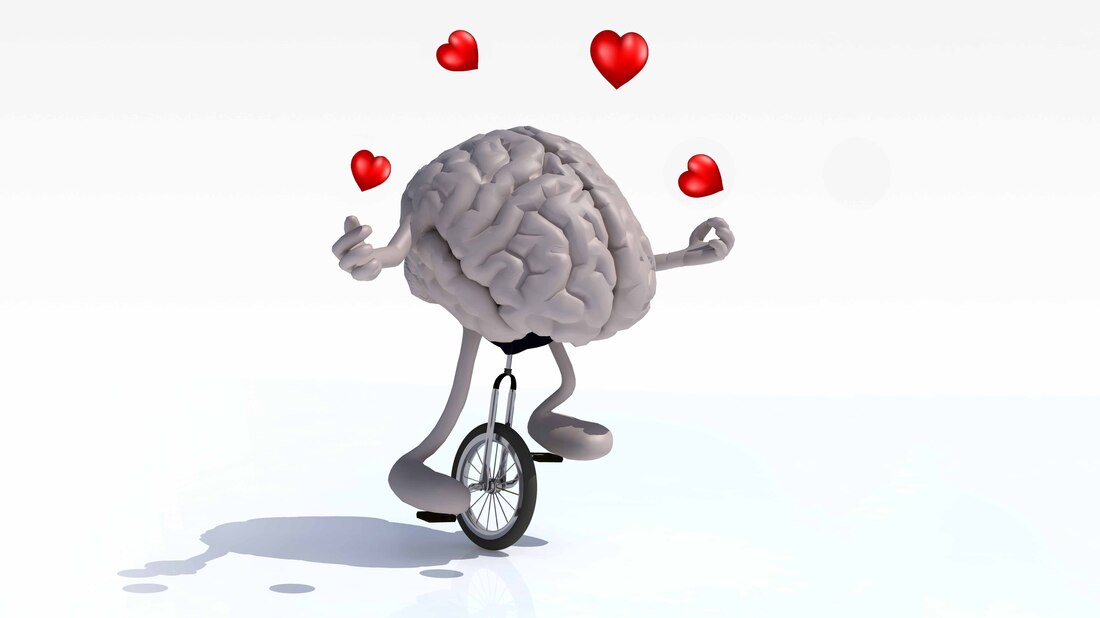
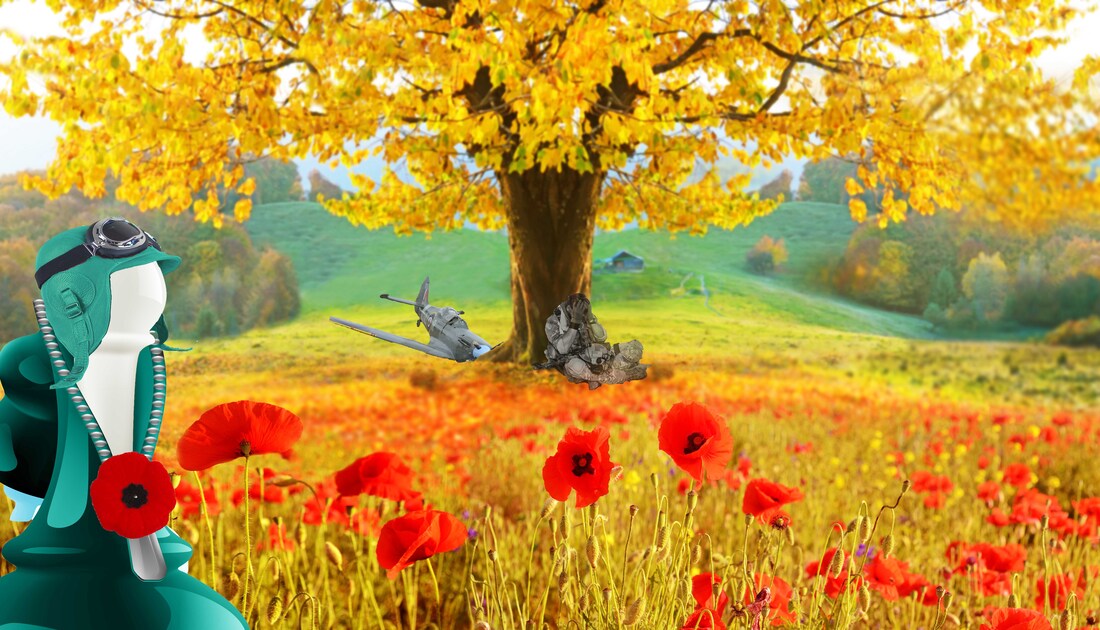
 RSS Feed
RSS Feed